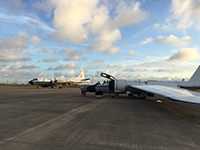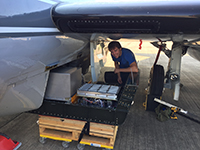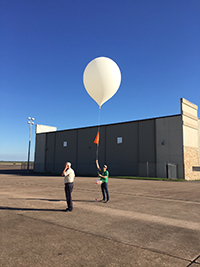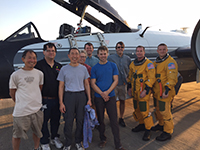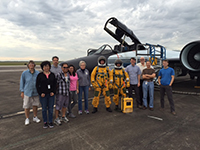Volcano-plume Investigation Readiness and Gas-phase and Aerosol Sulfur (VIRGAS)
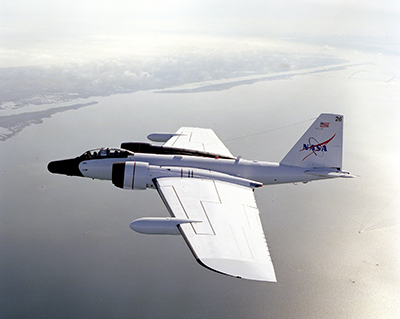
Where: Houston, Texas
When: October 2015
Who: Investigators include CSD and the Cooperative Institute for Research in Environmental Sciences (CIRES), NASA and the Bay Area Environmental Research Institute (BAERI), and the University of Miami.
How: CSD deploys a new instrument measuring low concentrations of sulfur dioxide (SO2) and instruments measuring water vapor and ozone aboard the NASA WB-57F high-altitude research aircraft. NASA deploys the Meteorological Measurement System (MMS); Instruments from NASA and the University of Miami measure other sulfur-containing species and meteorological parameters. A research balloon carries CSD's Printed Optical Particle Spectrometer (POPS) aloft in coordination with one of the WB-57F's five science flights, to get vertical profiles of the concentrations and sizes of atmospheric fine particles from the ground up into the lower stratosphere.
The objective of the Volcano-plume Investigation Readiness and Gas-phase and Aerosol Sulfur (VIRGAS) field experiment is to understand how natural and human-caused emissions of sulfur species, for example from volcanoes and from fossil-fuel power sources, ultimately influence climate, air quality, and visibility.
VIRGAS is a "mini-mission" to test a new standing capability for measuring SO2, other gases, and particles in the plumes from large volcanic eruptions. NASA, partnering with NOAA, would deploy the NASA WB-57F high-altitude research aircraft soon after future volcanic eruptions, giving scientists an unprecedented opportunity to observe the volcanic plume and understand the implications for climate and the atmosphere. It would also provide valuable insight into the implications of proposed mitigation strategies to counter climate warming by deliberate injections of sulfur into the atmosphere. Such injections, like explosive volcanic eruptions, would lead to an augmentation of the sulfate aerosol layer, but their effectiveness and other impacts on the atmosphere (such as damage to the ozone layer) are not certain.
The CSD SO2 instrument was on board as one of the VIRGAS flights flew over Hurricane Patricia above the Pacific Ocean. This hurricane shaped up to be a Category 5 hurricane and the largest ever recorded in the Western Hemisphere, making landfall on the west coast of southern Mexico with forceful winds and torrential rains.
